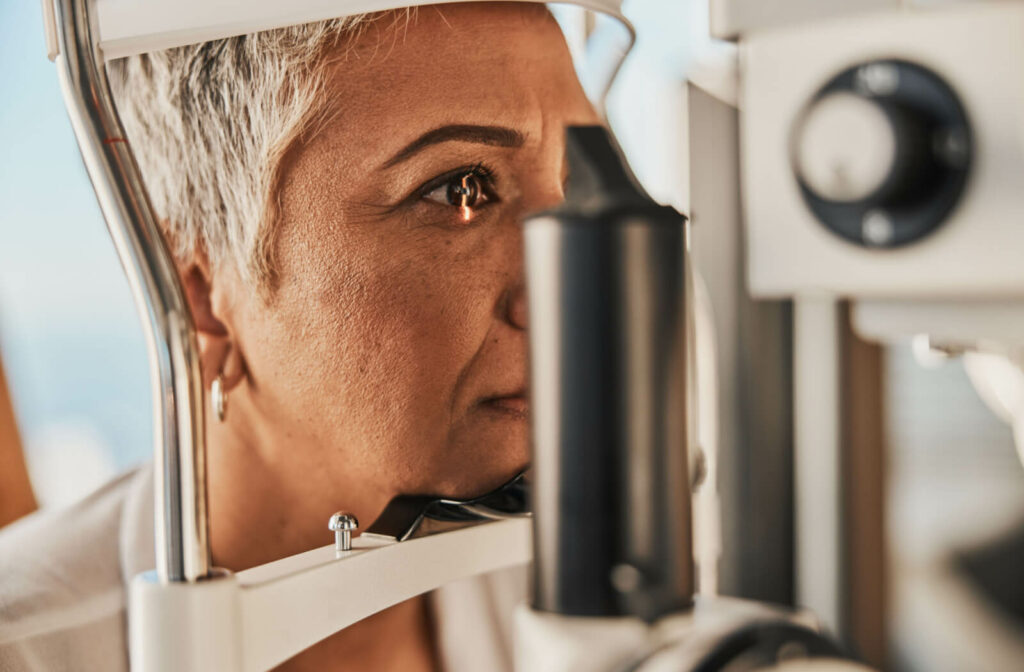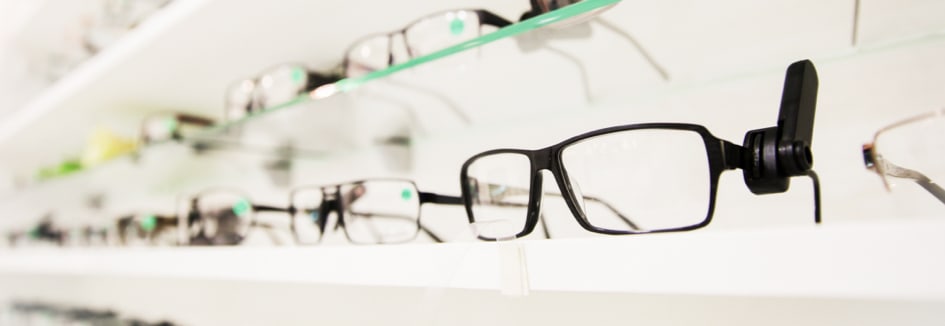Glaucoma is a serious eye disease that damages the optic nerve and has the potential to cause irreversible vision loss and, in severe cases, blindness.
There are many types of glaucoma, most of which progress slowly over time with no noticeable symptoms. Many people are unaware they have glaucoma until they experience significant vision loss, and at this point, the disease has advanced to late stages.
Comprehensive eye exams include preliminary checks for glaucoma to catch the disease early before it advances and damages sight. With early detection and proper management, you can preserve your vision.
What Is Glaucoma?
The optic nerve sends the images your eyes see to your brain, so when it gets damaged, it can lead to vision loss. Glaucoma is a term for a group of eye diseases that cause nerve tissue loss in the optic nerve. There are 2 primary types of glaucoma.
Open-Angle Glaucoma
This type of glaucoma is the most common form, accounting for 90% of cases. It develops gradually over time. It occurs when a blockage in the eye’s drainage canals causes fluid build-up that increases eye pressure.
Symptoms of open-angle glaucoma are:
- Gradual loss of peripheral (side) vision
- Tunnel vision (in advanced stages)
Angle-Closure Glaucoma
Angle-closure glaucoma is less common but can cause rapid vision loss if not treated promptly. It occurs when the eye’s drainage angle suddenly closes, causing an increase in eye pressure and severe symptoms.
Angle-closure glaucoma is an eye emergency and requires immediate medical attention to prevent vision loss.
Symptoms of angle-closure glaucoma include:
- Severe eye pain
- Headache, nausea, and vomiting
- Blurred vision
- Eye redness
- Halos around lights
Risk Factors for Open-Angle Glaucoma
High internal eye pressure (IOP) is considered a significant risk factor for open-angle glaucoma. However, the relationship between IOP and glaucoma is complex. You can have a normal IOP and develop glaucoma, or you can have a high IOP and never develop glaucoma.
If you have a high IOP, you are classified as a “glaucoma suspect.” The worry is that this increased pressure could lead to glaucoma development. You may be considered a glaucoma suspect if other indicators, like a suspicious optic nerve or a family history of glaucoma, suggest the possibility of glaucoma now or in the future.
Other risk factors include:
- Thinner corneas
- Chronic eye inflammation
- Taking medications that increase internal eye pressure
- Age (over 40)
- Myopia
- Diabetes
- Hypertension (high blood pressure)
Diagnosing & Treating Glaucoma
Regular eye exams are essential for protecting your vision, especially since glaucoma often progresses without early warning signs.
How Is Glaucoma Detected?
Glaucoma is progressive and worsens over time, so your eye doctor will monitor changes in your eye that may indicate glaucoma during your routine eye exams.
They may:
- Measure the pressure inside your eyes using a tonometer.
- Examine changes in your optic nerve using ophthalmoscopy.
- Check for blind spots in your peripheral vision using a visual field test.
- Evaluate your retina using retinal imaging or optical coherence tomography (OCT).
- Measure your corneal thickness using pachymetry.
Finally, your eye doctor may evaluate the drainage angle in your eye using a technique called gonioscopy. They use a special lens to examine the angle where the cornea meets the iris, where fluid drains out of the eye, to determine if any blockages or abnormalities could contribute to glaucoma.
Glaucoma is a complex disease. Using multiple tests provides a comprehensive approach to diagnosing and managing glaucoma and providing personalized care.
How Is Glaucoma Treated?
Although there is no cure for glaucoma, it can be managed. Most management strategies focus on reducing eye pressure:
- Medication: Eye drops are often prescribed as the first line of treatment. These medications help reduce IOP by decreasing fluid production in the eye or improving drainage.
- Laser therapy: Laser trabeculoplasty is a commonly used procedure involving a laser to open up the drainage channels in the eye, allowing for better fluid flow and reduced pressure.
- Surgery: In some cases, when medications and laser therapy are not sufficient, surgical intervention may be necessary. Procedures like trabeculectomy, where a new drainage channel is created, or implanting drainage devices can help lower IOP and prevent further damage.
- Lifestyle modifications: Making certain lifestyle changes can also play a role in managing glaucoma. These can include regular exercise, a healthy diet, avoiding smoking, and managing underlying health conditions.

The Importance of Managing Glaucoma
Glaucoma is chronic and requires lifelong management. If left untreated or unmanaged, it can lead to permanent vision loss and even blindness. But, with regular eye exams and proper management, you can maintain strong, healthy vision with glaucoma.
At Rock optiX, we offer thorough eye exams and personalized treatment plans for those with glaucoma. Our team is dedicated to helping patients manage their condition and preserve their vision.With proper management, you can continue seeing the world clearly for years. Schedule an appointment today.





















